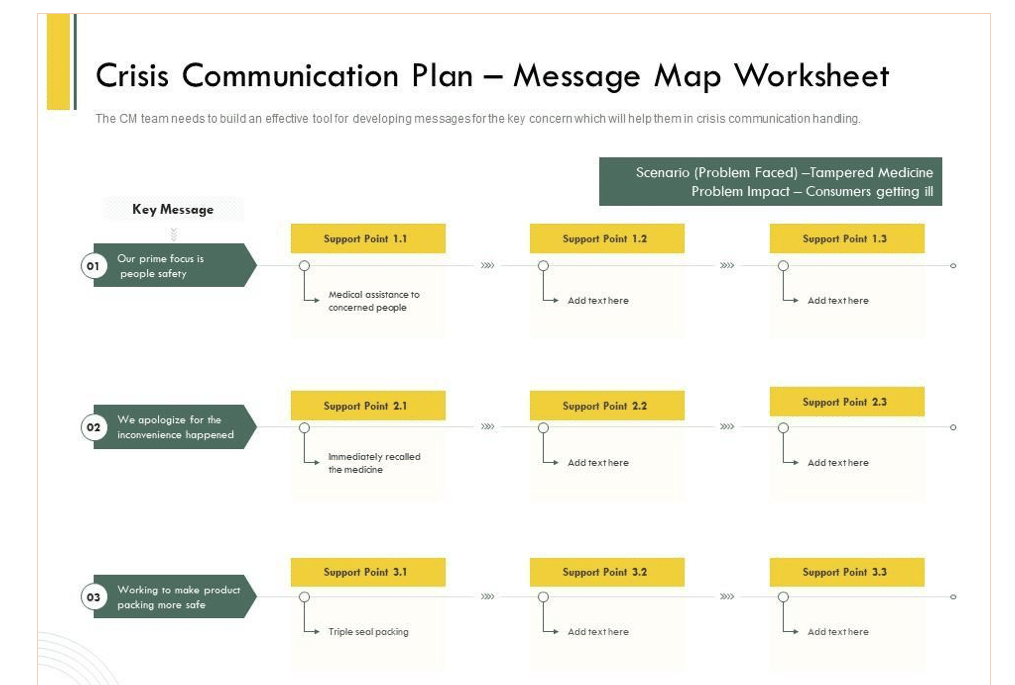Every day you have to deal with issues at your company. Most of the time, problems are relatively easy to resolve. Occasionally, you will face a crisis. You need to respond appropriately, whether it’s a personal data breach or a rebranding gone wrong. A crisis communication strategy can help you avoid costly missteps and get you out of hot water.
Here are four things every crisis communication strategy should include. Before we get into that, let’s cover the basics.
What is a crisis communication strategy?
A crisis communication strategy outlines the steps your company will take in the event of a disaster. The plan will also identify key stakeholders in your company and outline their responsibilities too.
The crisis communication strategy should have contingencies for problems you could face. For example, a company like Meta undoubtedly has a crisis communication strategy for a data breach. The basic idea here is that because people know what to do in the event of an emergency, they are less likely to make mistakes.
Elements of a crisis communication strategy
Most companies develop a crisis communication plan internally. Sometimes they turn to external agencies to help create the plan. Regardless of the approach, your crisis communication strategy should have the following elements.
1. Identify key individuals in your company
The best time to create a crisis management plan is before a crisis occurs. Building a crisis management team is the first step in developing a strategy, and choosing the right people for the team will help you cover all bases.
The president or CEO of the company should be the first member of the team. They are responsible for signing off on all the decisions that the team makes before, during, and after the crisis. As the public face of the business, they will also be responsible for reassuring customers and stakeholders that the company is addressing the issue.
Second, you need to involve your company’s legal and compliance teams to iron out any legal complications that could arise as a result of the crisis. They will also advise the team whether the crisis management plan complies with industry standards and government regulations.
Third, your PR team will be at the forefront of crisis communications. They are responsible for answering questions from the press and creating content that will emphasize the steps your company is taking to solve the crisis.
Finally, your senior leadership team – business unit heads and C-level executives – should be kept informed about the crisis management plan. They should also ensure that your messaging is consistent across different teams. A cohesive message goes a long way in fixing your reputation. When everyone from the CEO to the rank-and-file knows and says the same thing, you can control the conversation around your brand.
2. How to respond to customers and the press
A critical element of any crisis strategy is how you engage with customers and the press. Of course, you can’t anticipate every eventuality. What you can do, though, is give general rules for people to follow when dealing with inquiries.
You must nominate individuals to deal with the press and specific inquiries. Everyone should know who these people are so that they can redirect inquiries accordingly. Secondly, you want a general set of guidelines for responding to inquiries. Anyone with a customer-facing role should have access to these guidelines.
Here are some best practices to follow when dealing with customers or the press:
- Listen to the complaints, and note down what people are saying.
- Take responsibility for company actions.
- Explain what actions the company is taking to deal with the issue.
- Direct inquiries to nominated spokespersons as necessary.
Listening to customer feedback is important. That’s the strategy Gap opted for when it found itself in a crisis when the company changed its 20-year-old logo. Gap scrapped the new logo just one week after launching it because of the public backlash.
In making the decision, Marka Hansen, president of Gap North America, said the company has “been listening to its customers”. Due to its quick actions, Gap recovered quickly from the PR crisis.
Having a plan in place is great. You might want to turn to a crisis communication agency to help you deal with an event as it unfolds. Third parties can provide expert insights in a moment of crisis. They can help you make smart decisions when your team is dealing with a lot of stress and are under pressure.
3. How to communicate with employees
Internal communication during a crisis is important. You want your employees on your side. Providing staff with information will help stop the rumor mill. If staff know the management team has a plan, they are likely to have more confidence in the business.
When creating your internal communication strategy, you need to:
- Identify who is responsible for communication.
- Select which communication channels to use.
- Decide how frequently you will update staff.
- Ensure you stick to the schedule.
The spokesperson in a crisis should be someone your employees’ trust.
Don’t assign someone your employees do not respect. Chances are, they won’t trust whatever that person says. If your employees don’t trust the management team, you will face many added problems.
4. An understanding of needs
The crisis communication strategy will help you understand the pressures and responsibilities key staff members will face in a crisis. Providing crisis management training to key stakeholders will prepare them better for a disaster.
For example, you might provide your company spokesperson with training to help them deal with the reporters, hold press conferences, etc. After the training, the spokesperson should be more prepared and confident.
Crisis training varies, but ultimately, it should teach your employees to stay calm. Role-playing games can help key staff handle sessions where they will face a lot of pressure.
Crisis communication template
Below is a crisis communication template you can use to develop your plan. The graph format is useful for helping you prepare for different crises. The framework helps define the specific steps to take according to the given situation.
You can use something like this for your company.
Give key members of staff a copy of the crisis communication strategy. They need to know who to contact on your crisis management team. So, when something goes wrong, people know who will take responsibility.
Conclusion
A crisis communication strategy is critical to maintaining (even enhancing) the company’s reputation. With a strategy in place, you won’t be caught off-guard when something goes wrong.
This guide taught you what elements to include in your crisis communication strategy. The more detailed and comprehensive your crisis communication strategy is, the better. With a plan in place, your company will be able to deal with whatever crisis arises. You’ll emerge unscathed (or at least with the least possible damage) and maybe even stronger than ever before.






